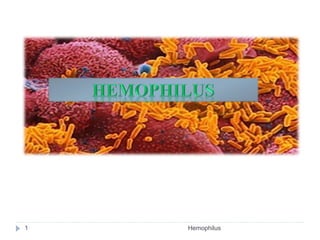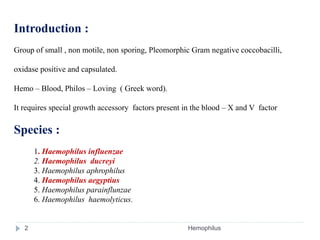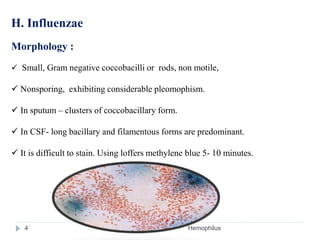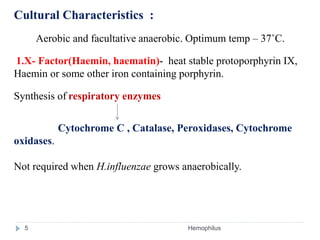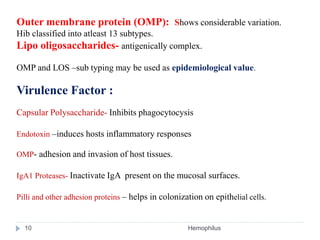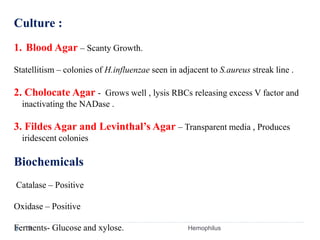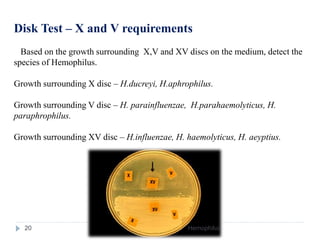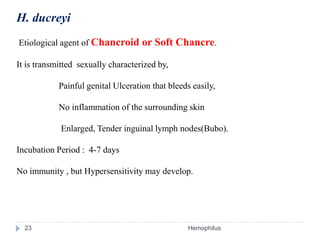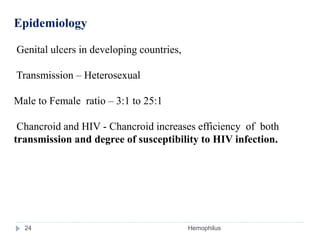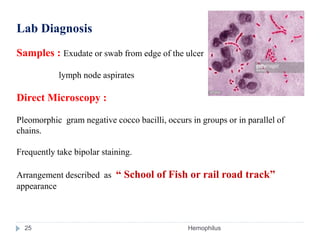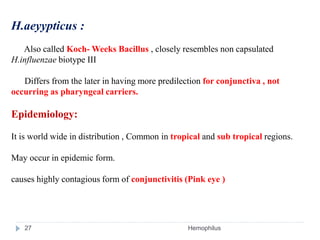1. Hemophilus is a genus of Gram-negative bacteria that requires specific growth factors found in blood. There are several species, with H. influenzae being the most clinically significant as it can cause invasive infections like meningitis and pneumonia.
2. H. influenzae is a small, pleomorphic coccobacillus that requires both the X factor (hemin) and V factor (NAD). It has a polysaccharide capsule that is the basis for its 6 serotypes, with type b being the most virulent.
3. H. influenzae can cause invasive infections like meningitis and pneumonia in children under 5 years old. Non-invasive strains typically cause conditions like sinus
